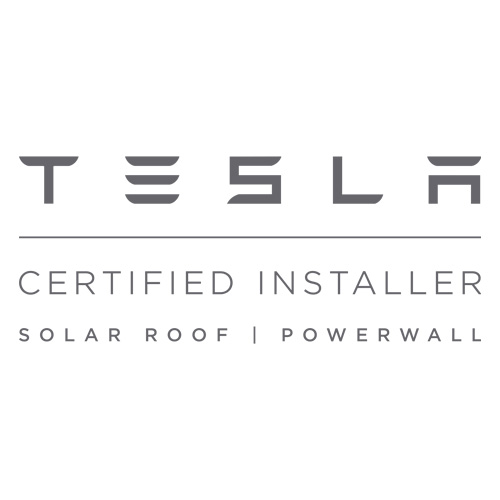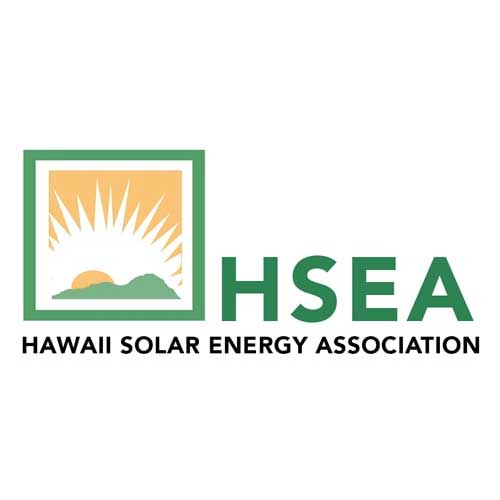How Long Does It Take For A Solar Roof To Pay For Itself?
Are you looking to install solar panels on your roof but don’t know how long it will take for them to pay for themselves? Or, do you know the payback period for solar panels but want to know more about solar roofs? In this blog post, we’re going to answer all of your questions about solar roofs and how long it will take for them to pay for themselves. We’ll discuss the costs of installing solar panels in Hawaii, the state and federal solar incentives in Hawaii, and the payback period for solar panels. We’ll also provide a FAQ section that will answer any other questions you have about solar roofs. So, whether you’re looking to install solar panels on your own or you’re looking to finance a solar roof through a loan, be sure to check out our blog post. We’ve got all the information you need to make an informed decision.
Solar Energy Production In Hawaii
When it comes to electricity, Hawaii is among the most expensive places in the US. According to Forbes, the average household in Hawaii pays about $130 per month for electricity, which is more than double the national average of $55.
Of course, there are ways to cut your electricity bill even further. For example, you can install solar panels on your home and save big on your electric bill. In fact, a study by GTM Research found that solar panels can provide a big savings on your electric bill – up to 78%. Even if you don’t live in Hawaii, installing solar panels can still be a great way to save money on your electric bill.
Once you have installed your solar panels, you will start saving money right away. The average homeowner who installs solar panel will see their monthly electric bill drop by around 30% after they have been installed for six months. After eight years of regular use, a solar roof will pay for itself – which is pretty impressive when you consider that these roofs typically cost around $35K!
After that initial investment has been made, you will continue saving money every month because of increased home value and tax breaks for homeowners who install solar panels. Not only does installing solar panels increase the value of your home; it also helps protect our environment by reducing greenhouse gas emissions from electrical usage. So whether you live in Hawaii or not – go ahead and install some sunnies! They’ll save you big time on your electric bills!
How Much Money Do You Save With A Solar Roof?
Are you tired of dealing with the hassle and expense of replacing your roof every few years? If so, you may want to consider investing in a solar roof. A solar roof is a type of roof that uses solar energy to generate power. This power is then used to heat and cool your home, just like a regular roof.
In Hawaii, solar roofs have a payback period of about 5 years, which means that you will start saving money right away. Over the long term, a solar roof can save you thousands of dollars in energy costs. Additionally, because solar roofs last for decades, the savings continue long after the initial investment has been paid back.
Another great benefit of using a solar roof is that it increases the value of your home. Anyone who has ever seen a house with a beautiful Solar Roof on it knows just how impressive they are! Not only do they look great – but they also protect your home from weather damage and increase its insulation value. In addition, since Solar Roofs help reduce your carbon footprint, they are an environmentally friendly choice as well!
Costs Of Installing Solar Panels In Hawaii
Are you thinking about installing solar panels on your home? If so, you’re in for a big savings. Not only are solar roofs cheaper to install than traditional roofs, but they also have a payback period of around 7 to 11 years. This means that you will start making money from your solar roof almost as soon as it’s installed!
One reason why solar roofs are so popular is because the cost of installing solar panels has dropped by about 70% over the last decade. In fact, Hawaii has the highest rate of adoption for solar roofs in the US. This is because Hawaii has some of the most expensive electricity rates in the country. By using a renewable resource like solar energy, homeowners can help reduce their carbon footprint and save money at the same time.
Not only do solar roofs save homeowners money on their electricity bills, they can also offset some of their property taxes and insurance costs. Plus, if you own a home in Hawaii or another sunny state, a solar roof could be just what you need to take advantage of all that sunshine!
How Long Does It Take For A Solar Roof To Pay For Itself?
If you’re thinking about installing a solar roof, you may be wondering how long it will take for the system to pay for itself. The answer is that it depends on a few factors, including the cost of the solar panels, the efficiency of the panels, the amount of sunlight that the location receives, and your electricity rates. However, on average, a solar roof will pay for itself within 7 to 20 years.
That said, there’s no need to worry if your roof doesn’t pay off immediately. A solar roof can last for decades – even 100 or more years – without requiring any maintenance. In fact, most solar roofs only require occasional cleaning and inspection. So whether your roof pays off in 7 or 20 years isn’t really that important – as long as it does!
State And Federal Solar Incentives In Hawaii
Are you looking to go solar? If so, you’ll want to check out the state of Hawaii’s many incentives. Hawaii offers a number of different incentives that can help make going solar a more affordable and less risky investment.
The state of Hawaii offers a Solar Photovoltaic System Tax Credit worth up to $5,000 for systems that are installed on your primary residence. This credit is available to individuals, businesses, and government entities. This makes solar installation more accessible for everyone in the state, no matter their income level.
In addition to the Solar Photovoltaic System Tax Credit, Hawaii also offers the Solar Water Heater Tax Credit worth up to $1,500 for systems that are installed on your primary residence. This credit helps offset the cost of installing a solar water heater system and makes it more affordable for homeowners who want to go solar but don’t have enough space or budget for a full system.
Finally, Hawaii offers the Federal Solar Investment Tax Credit worth up to 30% of the cost of a solar system. This tax credit can reduce your upfront costs by giving you a larger return on your investment sooner than usual. Combined, these three tax credits make going solar in Hawaii an affordable and viable option for many people and businesses.
On average, it will take 10- 12 years for a solar roof in Hawaii to pay for itself with all of these incentives fully taken advantage of. However, this payback period can vary depending on how much money you’re able save by going solar through these programs and how much interest you’re able to earn on your investment throughout that time period. In any case, going green is definitely worth checking out as an option for lowering your energy bills!
How Long Will It Take For A Solar Roof To Pay For Itself?
The upfront cost of installing a solar roof can vary greatly depending on where you live and the size and type of system that you choose. Generally speaking, you can expect to invest between $15,000 and $50,000 for an average-sized rooftop system with 100 kilowatts (kW) of capacity. However, this price can be reduced if incentives or financing programs are available in your area. Additionally, the cost may be even lower if you decide to install a smaller system with fewer panels.
Once installed, a solar roof will help reduce your electricity bills by producing electricity from the sun’s energy. The amount of money saved will depend on how much energy your system produces as well as the energy rates in your area. Generally speaking, systems installed in areas with high electricity rates will yield greater savings than those installed in states with low rates. Additionally, larger systems produce more electricity than smaller ones and therefore offer greater savings potential over time.
The length of time it takes for a solar roof to pay for itself can range from 4-10 years depending on these factors mentioned above. This timeframe is influenced by how much energy you use each month compared to how much electricity is produced by the solar roof. For example, if you use 1 kW per day but produce only 0.5 kW per day from your rooftop system then it will take longer for the cost savings to equal or exceed your initial investment because there is not enough surplus power being generated at any given time.
How Long Does It Take For A Solar Roof To Pay For Itself In Hawaii?
In order to answer this question, there are several factors that must be taken into account. The first is the cost of a solar panel system. Depending on the size and type of system you install, prices can range from $10,000 to $50,000 or more. This initial investment can be daunting for many homeowners and should be carefully considered before taking action. The second factor that needs to be addressed is the utility costs associated with electricity generated by conventional sources such as natural gas or coal-fired power plants. On average, electricity rates in Hawaii are among the highest in the United States due to its isolated location and lack of connectivity with other states’ power grids. Finally, there are also incentives offered by both the federal government and Hawaii state governments that can help offset some of these upfront costs.
The amount of time it takes for a solar roof to pay for itself in Hawaii will depend largely on how much energy it generates compared with what would have been spent on traditional electricity sources over the same period of time. For example, if your solar roof produces 5 kilowatt-hours (kWh) per day while your traditional electric bill cost 10 kWh per day over that same period then your net savings would equate to 5 kWh per day or 35 kWh per week (assuming no change in total usage). At an average rate of $0.23/kWh in Hawaii, this would equate to a weekly savings of nearly $8 (35 x 0.23 = 8). Over the course of one year this equates to approximately 420 kWh saved or $95 annually (420 x 0.23 = 95). Thus, it could take approximately 10 years for a typical residential solar roof installation to pay for itself assuming no changes in electric consumption during that time frame ($10-50K / 95 = 104 – 517 years). Of course if consumption increases then it would take longer than 10 years while if consumption decreases then it could take less than 10 years.
What Is The Payback Period For Solar Panels In Hawaii?
The payback period for solar panels in Hawaii is largely dependent on several factors including the size of the system installed, the cost of installation, and the amount of sunshine available in your area. Generally speaking, most homeowners in Hawaii can expect to see a return on their investment within 10-15 years when they install an appropriately sized system. This means that after installation costs and potential incentives have been taken into account, homeowners should be able to make back what they spent on their system over this time frame.
Although this may seem like an extended amount of time to wait for your investment to pay off, there are plenty of other benefits associated with installing solar panels in Hawaii that should not be overlooked. Firstly, going green with your home energy source puts you at the forefront of environmental sustainability while also reducing your carbon footprint significantly. Secondly, once your initial installation costs have been paid off by savings on electricity bills over time, you will effectively be producing free electricity thereafter.
Furthermore, depending on where you live in Hawaii there could be additional incentives available which could reduce the overall cost of installation and decrease your payback period even further. Specifically, Hawaiian Electric recently announced plans to increase net-metering credits by up to 25% which would result in lower electric bills and faster recuperation periods due to increased savings. Additionally, many counties across the state offer generous tax credits or rebates when upgrading your home’s energy source with renewable options like solar panels or wind turbines – these too can help lessen the financial burden involved with switching to alternative energy sources.
Solar Panel FAQs
Q: What is solar energy?
A: Solar energy is clean, renewable power that is generated from the sun’s rays. This form of renewable energy has become increasingly popular in recent years as an alternative to traditional sources such as coal or natural gas. Solar panels can be installed on rooftops or in open spaces and then used to convert sunlight into electricity for residential and commercial use.
Q: What are the benefits of using solar energy?
A: There are many benefits associated with using solar power, including saving money on your electric bills, reducing your environmental impact, increasing home value, and improving energy security. Additionally, most power companies offer incentives for using solar panels which may include tax breaks or credits against your utility bill.
Q: How do I determine if my home is suitable for installing solar panels?
A: When looking at potential sites for installing solar panels, it’s important to take into account factors such as location (the best spot would receive direct sunlight), shading (trees or other obstructions could limit the amount of sunlight received), and available space (panels will require a certain amount of room). If you’re unsure whether your home is suitable for installing solar panels, it’s best to consult with a professional who can provide more detailed information about potential sites for installation.
Q: What type of panel should I get?
A: The type of panel you choose will depend largely on how much electricity you need and what type of setup would work best for you. Generally speaking, most homes use photovoltaic (PV) cells which convert direct sunlight into electricity. Monocrystalline silicon cells are generally more efficient than polycrystalline silicon cells and therefore recommended if efficiency is a priority over cost savings. You may also want to consider thin film cells which can be cheaper but less efficient than crystalline cells depending on your needs.
Q: How long does it take to install a solar panel system?
A: This depends largely on the size and complexity of the system being installed as well as any local permitting requirements that might need to be met prior to installation. Most systems typically take anywhere from 1-2 days up to several weeks depending on these factors. For larger scale projects like rooftop installations, installation times can range from 1-3 months while smaller projects like portable systems could take only 1-2 days depending on set up requirements..
To Summarize
Overall, the amount of time it takes for a solar roof to pay for itself depends largely on individual circumstances such as location and usage habits but generally ranges anywhere from 5-10 years with proper financial planning and incentives applied. With advances in technology continuing at an ever-increasing pace coupled with one-time investments from local governments towards green initiatives like renewable energy sources like photovoltaic systems (PV), this timeline may shrink even further in due course allowing homeowners access into cleaner renewable energy sources at an even faster rate than before while helping them save money along the way too!









